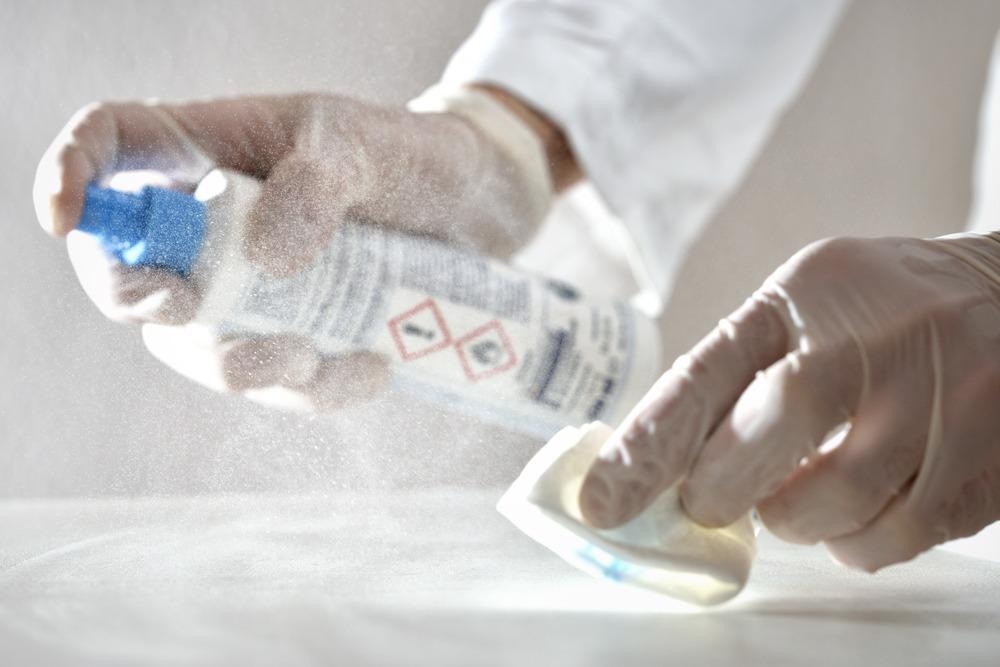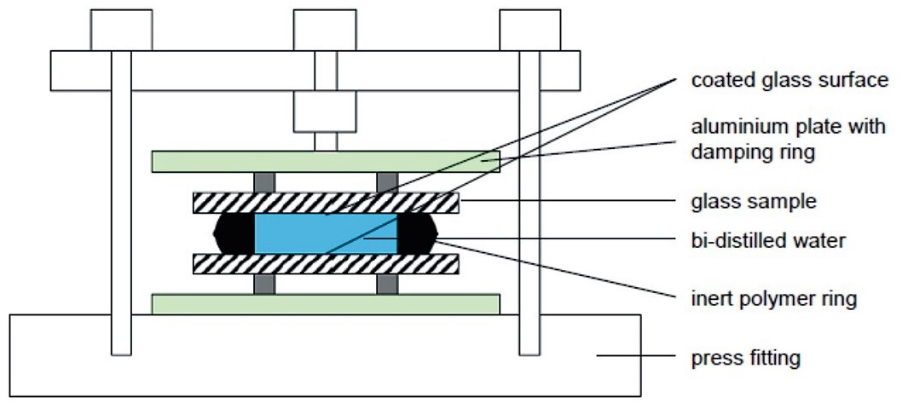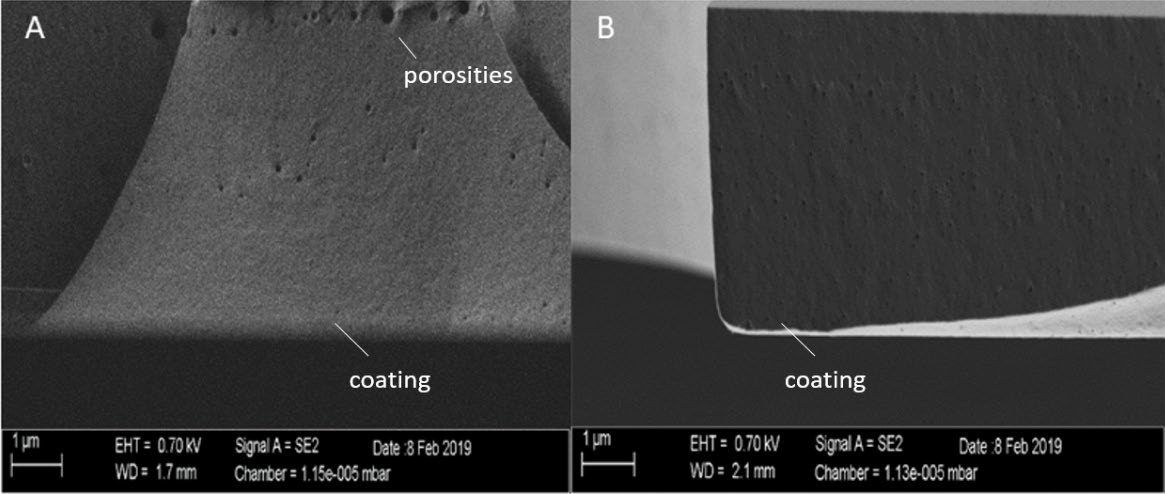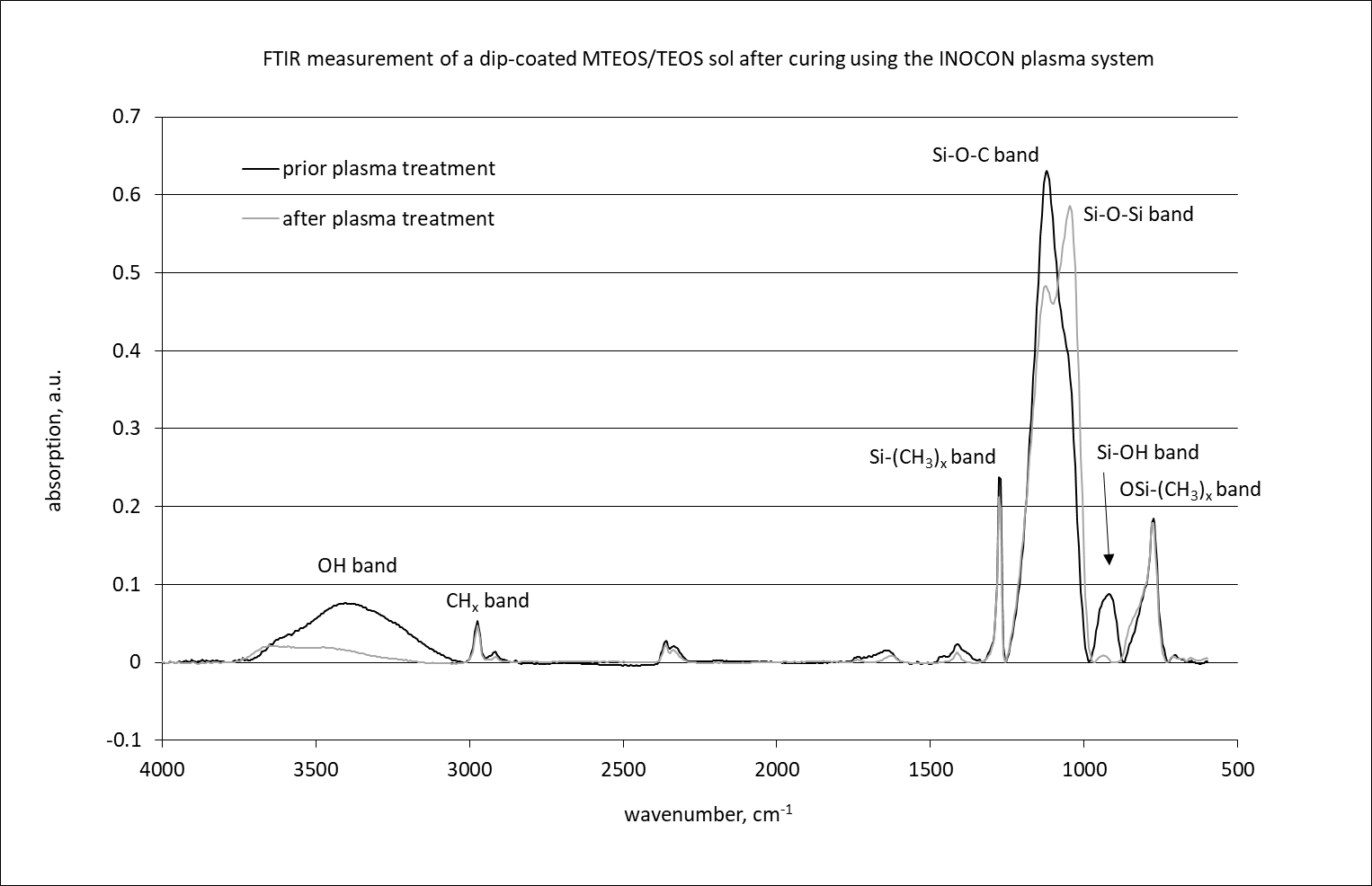In today’s post-pandemic world, our collective awareness of how surfaces that we regularly come into contact with and touch may contain bacteria, viruses, and pathogens is all too acute. Now, researchers in the journal Materials have revealed that a type of surface coating containing copper nitrate (Cu(NO3)2) could be applied in real-world scenarios to help limit the spread of germs through surface contact.

Study: Antimicrobial Activity of a Novel Cu(NO3)2-Containing Sol–Gel Surface under Different Testing Conditions.Image Credit: Sven Wayer/Shutterstock.com
In the study, the Austrian team has noted that the development of self-disinfecting antimicrobial surfaces and surface coatings has been widespread since the mid-1960s and that the ancient Egyptians were aware of the antimicrobial properties of copper.
Recent approaches to the technology include incorporating copper alloys into surfaces that are often touched such as door handles and fixtures in public bathrooms. This is due to the fact that copper mediates contact killing via a release of CU ions which can disrupt bacterial membranes and damage bacterial proteins.
Additionally, copper ions can induce the production of highly detrimental hydroxyl radicals via Fenton-like chemistry, which, in turn, leads to damage to DNA, proteins, and lipids. Therefore, antimicrobial surfaces and coatings may offer prolonged resistance and protection while being resistant to various disinfectants and cleaning agents.
Dr. Clemens Kittinger, the co-author of the study and researcher at the Medical University of Graz, states, “One way this could be realized at low-cost, as well as ease of application, could be sol–gel-based coating systems.”

Scheme of the setup for leaching tests. Image Credit: Toplitsch, D, Materials
However, the antimicrobial activity and durability of these surfaces come under scrutiny and demonstrate some limitations when subjected to cleaning, which must be considered with the future use of these surfaces and how necessary improvements can be made.
Sol-Gel Synthesis
Generally speaking, sol-gel synthesis is a wet-chemical process method whereby solids such as glassy and ceramic materials are produced from small molecules. The sol (solution) typically forms a gel-like network that is comprised of both liquid- and solid phases.
By incorporating appropriate organofunctional silicon compounds into the inorganic network during condensation, the properties of the resulting sol–gel layers can be specifically adjusted
Dr. Clemens Kittinger, co-author of the study and researcher, Medical University of Graz
Furthermore, antimicrobial properties are possible with the addition of metal-oxide particles which are expedited nanoparticles. The materials are then applied to surfaces via spray- and dip-coating techniques to achieve antimicrobial activity.
Kittinger and his team analyzed a novel Cu(NO3)2-containing sol-gel surface for its antimicrobial effectiveness using the ISO 22196 standard under various conditions, which included introducing a cleaning step for assessment.
However, as noted in the study, the surfaces did not perform as would be expected in real-world scenarios when subjected to various cleaning methods, including using an ethanol-based solution typically used today in medical facilities and the wider public environment.

Scanning electron microscope (SEM) images of the layers without (A) and with Cu (B). Image Credit: Toplitsch, D, Materials
Antimicrobial Surfaces
There are various scenarios in which antimicrobial, self-cleaning surfaces would be of benefit outside of biomedical applications. Amongst these, in addition to door handles and bathroom fixtures, are touchscreen panels which are being increasingly deployed in public areas.
While these surfaces could be regularly cleaned, when subjected to heavy human traffic it can become an almost impossible task; therefore, one solution would be to have a surface that is inherently antimicrobial/virucidal.
The application potential of antimicrobial coatings and surfaces is being extensively deployed already in biomedical applications but requires further research and development for widespread commercial use.
This is due to the fact that when subjected to certain cleaning methods, the Austrian research team noticed a reduction in the antibacterial effectiveness of the materials. One of the surprising results was the potential of producing a stronger bond of the bacteria and albumin to the material which makes them resistant to cleaning methods.
“We observed that disinfection with 70% ethanol, as it is common practice in hospitals for open hard surfaces, led to a total loss of antibacterial activity of the surfaces, which might be explained by mechanical or chemical disintegration of the surfaces themselves,” says Kittinger.
Considering the intended use and application, the fact the effectiveness surfaces of the surfaces is compromised when exposed to various cleaning agents calls for further development: “This again highlights that testing the durability of these surfaces to withstand cleaning routines needs to be the main consideration for antibacterial surfaces,” Kittinger added.
Therefore, when considering future uses of high-touch surfaces, developers of antimicrobial coatings and sol-gel surfaces must consider regular cleaning and mechanical resistance of the material. This will help facilitate wider commercial use of such surfaces as well as inhibit the spread of bacteria, viruses, and pathogens.

FTIR spectra of as-deposited and plasma-cured MTEOS-TEOS sol–gel film. Image Credit: Toplitsch, D, Materials
References:
Toplitsch, D.; Lackner, J.M.; Schwan, A.M.; Hinterer, A.; Stögmüller, P.; Horn, K.; Fritzlar, N.; Pfuch, A.; Kittinger, C. Antimicrobial Activity of a Novel Cu(NO3)2-Containing Sol–Gel Surface under Different Testing Conditions. Materials 2021, 14, 6488. https://www.mdpi.com/1996-1944/14/21/6488
Disclaimer: The views expressed here are those of the author expressed in their private capacity and do not necessarily represent the views of AZoM.com Limited T/A AZoNetwork the owner and operator of this website. This disclaimer forms part of the Terms and conditions of use of this website.